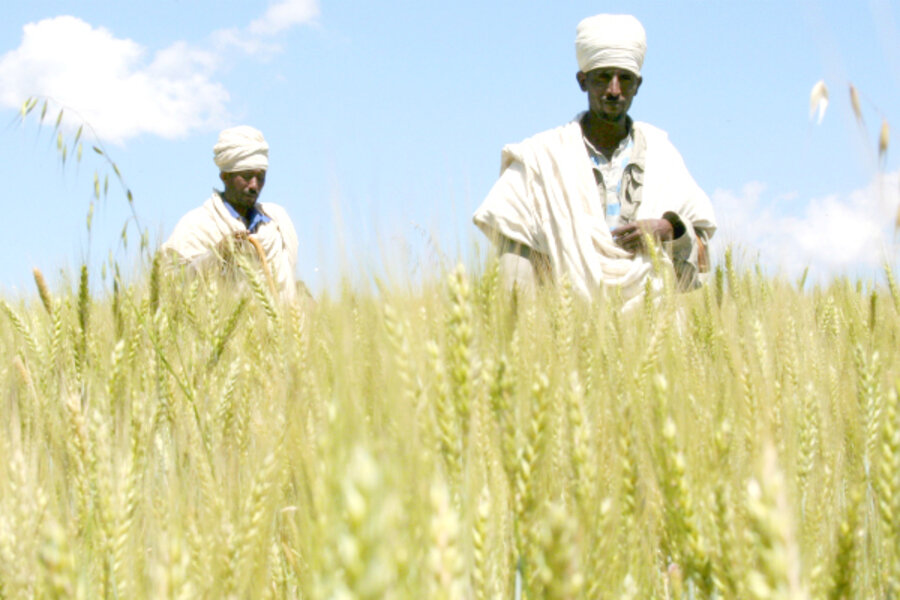Turning to old crop varieties for tough times
Loading...
How will Ethiopian farmers cope with the climatic conditions that are likely to prevail in 20 or 30 years time? One of the answers lies in an unexpected place: the genetic diversity of crops stored in the country’s own gene banks.
Traditionally, gene banks have been established to store material for plant breeders to use when developing new varieties, not for direct distribution of seeds to farmers.
However, a new project led by Bioversity International, a center of the Consultative Group for International Agricultural Research (CGIAR) is reconnecting farmers with landraces. These are varieties developed by farmers over millennia – but never been bred by scientists – that have been largely lost from the landscape.
Researchers working with the "Seeds for Needs" project, which is jointly implemented with Ethiopia's Institute for Biodiversity Conservation and the National Agricultural Research Institute, have developed a tool to help farmers choose varieties to suit their future needs.
The research initially focused on providing new varieties of barley and durum wheat to 100 women farmers at three sites of varying elevation.
During the first phase of the project, information about more than 12,500 samples of seeds of different varieties was gathered to identify the ones from areas currently experiencing the climatic conditions – in terms of rainfall and temperature – projected to occur at the pilot sites in a generation’s time.
The most promising 100 varieties of each crop were then tested on-farm by the women, using their land and labor.
After the first growing season, the women selected the varieties with the traits they considered most valuable. These were then distributed to other women within their communities to be grown during the next cropping season.
Even though the women did not specifically choose varieties for their ability to cope with future climatic conditions, the initial selection provided them with a range of seeds and options that they didn't have before.
"If they grow a few varieties that are tolerant of climate change, then they will be in better shape to face the future than they would be otherwise," said Laura Snook, an expert on forest genetic resources with Bioversity.
The project “is also drawing the attention of agricultural ministries and research institutions to the important role gene banks can play in climate change adaptation strategies," she said.
In Papua New Guinea, farmers and scientists are using a similar methodology to identify varieties of sweet potato and yam – both crops that can’t be stored or sown as seed and are instead reproduced as clones of the parent plan t– that will help farmers cope with climate change. ‘Seeds for Needs’ projects have also been launched in Mali and India.
While in some areas of the world farmers will be able to adapt to climate change by switching the crop breeds they use, in other areas they may have to plant different crops altogether. In Colombia, for example, farmers in some regions have had to abandon growing coffee due to rising temperatures and are now planting crops such as peppers and pineapples.
In other areas, farmers may have to abandon activities altogether if the climate becomes too harsh for farming. The CGIAR, through its research program under Climate Change, Agriculture and Food Security (CCAFS), is working worldwide to understand not only how climate change will impact crops, fisheries, livestock, and forests, but also to help develop and disseminate the best opportunities for farmers to adapt to, and help mitigate, climate change.
• Charlie Pye-Smith is a science writer for the CGIAR Research Program on Climate Change, Agriculture, and Food Security (CCAFS).
• This article originally appeared at AlertNet, a humanitarian news site operated by the Thomson Reuters Foundation.
• Sign up to receive a weekly selection of practical and inspiring Change Agent articles by clicking here.







